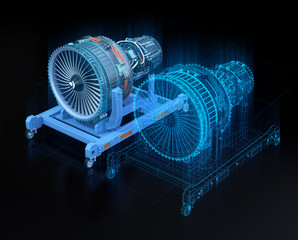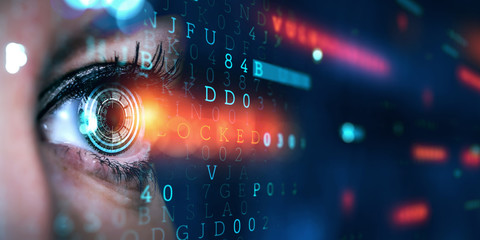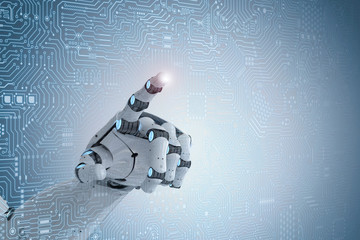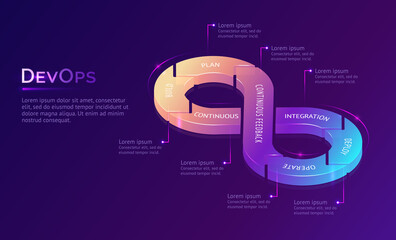TECHNOLOGIES
DIGITAL TWIN TECHNOLOGY

Digital Twins it is the Innovation pillar of the Future,which conveying virtual representations of real-world products, systems and cities. For example, the digital twin of an electric motor not only showcases form, but also analyzes functions – from the rotation of the shaft, to thermal conductivity, to data from sensors, and beyond. What’s more, the digital twin continuously evolves thanks to the flow of data, user experience feedback, and new input. And it’s greatly impacting development, production and operation. In development, a product’s behavior can be simulated and tested long before a physical prototype has been built. Siemens utilized the digital twin to develop a world record-setting, electric aircraft motor that not only weighs 50 kilograms, but is also five times more powerful than comparable electric motors. But it doesn’t stop there. Digital twins also unleash the power of 3D printing. In a recent Siemens study for gas mixing systems, insights from the simulation of form and flow behavior were combined with generative algorithms. The result? it is extremely unique channel shape and configuration – one significantly more efficient than anything previously designed. Even complete factories down to individual machines can be simulated and tested. For instance: robots. It’s difficult for them to perform milling tasks because large forces in the manufacturing process lead to inaccurate movements. But with the digital twin, the forces that push the robot away from the milling path can be calculated and indemnify in real time, keeping the robot in its path. When it comes operations, digital twins can compare the sensor data of a real point in real time with the simulation of its point. The availability of the point parallel to operations can be reliably predicted and sudden disruptions become a thing of the past.

Merging digital twins with artificial intelligence allows computers to independently design advanced products.For development, production and operation, the digital twin breaks with traditional paradigms and opens up extraordinary possibilities. That’s why digital twins are the innovation spine of the future.
COMPUTER VISION
Computer vision is an area of computer science, and well, let me just
start over. In computer vision, we try to teach computers how to see
and that seeing can refer to understanding scenes, reconstructing 3D
objects, recognizing objects, avoiding obstacles, helping blind people
navigate.And a lot of this makes use of machine learning, and it also
makes use of geometry and applied math.There are legends about how it
began as a summer project. Part of that is because when something became
successful, it got renamed. Like bar code scanning is an instance of
computer vision.Computer vision is also responsible for the yellow
first down line that you might see watching football on TV. It helps
stabilize videos and create virtual worlds. It helps cameras see faces
so they're not blurry. And it's getting better at recognizing.A lot of the videos on this channel
have previously touched on a specific example of computer vision. But
here, I want to zoom out and give you more of an overview of what
computer vision is. So the next time you see those two little words,
you'll have a deeper understanding of what they are. What's the
differences between human visual systems versus computer visual systems? From the computer perspective, the image is really just an array of
numbers or if it's color, it would be three arrays of numbers.

By themselves,these pixels don't mean anything to a computer.The computer has to interpret what they are. And in general,there's four approaches for how it does this.There's a lot of work by the field on object recognition.Given a photo of something--where are all the objects, and what are they? That is very close to solved at the generic level,meaning that it is a tree,not that it is a very specific type of tree. That remains somewhat challenging another direction is physical reconstruction. So given a photo of something, what's the three dimensional shape of everything? If you think about Google Street View van going down the street capturing spherical panoramas,that data it captures is still two dimensional. But when you feed it to algorithms that match features between those images,you can produce these three dimensional images.If you have a self-driving car,and you want to track pedestrians,track lane markings.Or it may be more familiar to your daily life-- selfie lenses. And lastly there's re-organization.But more broadly, it's known as unsupervised learning. So for example,with children, how is it that they learn about the world without being told everything? Traditionally computer vision models are trained with massive amounts of labeled data.The goal within unsupervised learning is that you just get the data,and somehow reorganize it in a way where you make sense of it.An example of this sort of approach took me to a Google robotics lab. For us, just seeing robots being able to pickup an object, it's very hard to convey that it's actually a very exciting thing for people who are doing research in this field.The reason why it's exciting is that when you've seen a robot picking something up in a video, that robot has probably been given a very specific set of rules to help it pick up that very specific object. In contrast, these robot arms have learned to pick up all sorts of objects, even ones they've never seen before. And they don't use rules to do this.

We try to use computer vision in a very implicit kind of way. When the robot sees the object, it's not going to try to recognize that it's an apple. All it does is it's going to use that image to grasp. We don't tell it exactly what to do with the image. If it had a sponge, it would learn that you don't get anywhere by just trying to grasp it. You just pinch it and you can pick it up like that.Over months of training and more than 800,000 attempts, it's now about 80% successful.So imagine your robot is trying to grasp this.And there's really not much difference in between the two. A lot of people in object recognition have to remind them selves show hard this problem is for computers. And one way to do that is to turn the image upside down and invert the colors. Mathematically, that doesn't really amount to anything. As far as the computer's concerned, you basically did nothing. But it clearly impairs human ability to recognize things.I still don't quite understand how a computer actually sees, but I know that at the end of the day the world has to be converted to numbers, and then-- Well, the thing is that computer vision researchers don't really understand how a computer sees, either. It's funny. It's like alchemy and chemistry. It's like alchemy came first, and then chemistry came in. And right now we're in the alchemy stage of computer vision.Where it works, but we're not sure why. And it's the chemistry stage that I look forward to.Computer vision is a very good way to learn about the world. If you can parse what's visually around you, you can learn a lot of information about the real world that you wouldn't have access to otherwise.I hope they believe that, with their futuristic mobile device, if they see some bug or a little crab on the beach, they will just assume that it has always been the case that you can just snap a photo and that system will tell you what it is and everything you could want to know about it.
DevOps

devops is basically a combination of tours development and operations so what do we get when we combine these two simply speaking the devops is a culture that implements technology in order to promote collaboration between them elephants and operations team to deploy code to production faster in an automated and repeatable way the goal of the Wolves is to increase an organization speed when it comes to delivering applications and services many companies have successfully implemented devops to enhance their user experience let's take for example Facebook's mobile app which is updated every two weeks effectively telling users you can have what you want and you can have it now ever wondered how Facebook was able to do the social smoothing it's the devops philosophy that helps Facebook and make sure that it's apps aren't outdated and that users get the best experience.Facebook accomplishes this true of code possession model that build its developers organize that includes testing and hold up through production and delivery for each kernel of code they write and update its true policies like this but Facebook has save love a devops culture and has successfully accelerated its development life-cycle industries have started to gear up for the digital transformation by shifting their means to weeks and months in place of years while maintaining high quality.

DevOps basically it is a software development strategy and the aim of this strategy is to bring together to Devon the off side of the company now this slide basically tells us about what are the various phases involved in DevOps and what are the various tools available for those phases so the first thing is planning you get the requirement from the client you start planning your application right and once planning is done you start writing the code now there are multiple developers who are writing code for that particular application so you need a system that can manage the code for example if I want to go back to the previous commit how can I do that or if I want to check the previous version of the code basically to manage the source code we have multiple tools like gate subversion git is a decentralized version control tool and is preferred by mostly industries and this is included in the courses well after that the code is built now build life cycle includes lot of things it includes validation of your application compiling your application packaging your application performing unit tests integration tests those things are done in this face then what happens the build application is deployed onto the test servers for testing and once testing is done it is deployed onto the prod servers for release and after that it is continuously monitored by tools like nagus in Splunk now let me focus on the tools which are there so for the build we have multiple tools like maven and and Gradle depending on the kind of application you have you choose the build tool for Java applications we usually go for maven then for testing that is the end user testing or you can even consider it as functional testing in this case we use selenium after that in order to deploy the application onto the prod servers there are tools like puppet chef and salsa so puppet chef Hansel and salsa are tools like these are called configuration management tools the major aim is to provision and deploy your application to provision your nodes for example in the test server I might require a particular software stack maybe a lamp stack right so I can write scripts using these tools and can deploy it onto the test servers as well as in the prod servers so all of these four tools have a similar architecture that is a master/slave architecture in which I can write the scripts for a particular software stack in the master and deploy it onto the notes right so with this we can actually maintain an accurate historical record of a previous system State as well so if I want to roll back to the previous version of the software stack I can do that as well because everything is well documented in the master so it can be a puppet master it can be a chef master can be control machine or it can be a salt master as well so these are the four tools that we call configuration management tools and they play a major role in DevOps

THANKS FOR READING MY BLOG STAY TUNE FOR MORE BLOG ON TECHNOLOGY & ALSO FOLLOW & SUBSCRIBE MY PAGE.
Comments
Post a Comment
Please do not enter any spam link in the comment box.